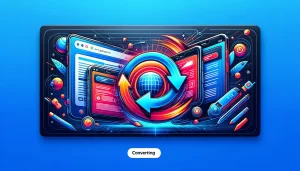Are you tired of the administrative hassle that comes with managing a driving school? From scheduling lessons to keeping track of student progress, the myriad of tasks can often become overwhelming. However, there’s a solution that can streamline your operations and take your driving school to the next level: Driving School Management Software.
In the bustling landscape of Australia’s driving education sector, the need for efficiency and streamlined operations has never been greater. Driving schools, from Perth to Sydney, are not just about teaching the art of driving anymore; they’re evolving into complex businesses that require adept management skills.
In this blog, we’ll explore the common challenges faced by traditional driving schools and how driving school management software can revolutionise the way you run your business. From scheduling and communication to compliance and safety, we’ll delve into the obstacles that traditional driving schools encounter and the solutions that smart technology offers.
Facing the Hurdles in Conventional Driving School Management
Running a driving school using traditional methods poses significant challenges. Without modern tools, your effectiveness, productivity, and profitability suffer. Here are some major hurdles:
Scheduling and Booking Woes:
Coordinating the availability of instructors, vehicles, and students manually is a labyrinthine task. You’re susceptible to double bookings, scheduling conflicts, and missed opportunities without a streamlined system. Moreover, relying on archaic methods such as phone calls, emails, or paper calendars leaves room for errors and inefficiencies. The inability to provide easy and convenient booking options for potential customers may result in lost business opportunities.
Communication and Feedback Barriers:
Effective communication is the cornerstone of any successful driving school. However, traditional communication channels like phone calls, emails, or SMS can be unreliable and inefficient. Timely dissemination of information to instructors, students, and other stakeholders becomes challenging. Additionally, gathering and analysing feedback is essential for enhancing service quality and customer satisfaction. However, obtaining valuable insights becomes arduous without a structured feedback mechanism, leading to stagnation in improvement efforts.
Record-keeping and Reporting Challenges:
Maintaining accurate and up-to-date records is crucial for the smooth operation of a driving school. However, relying on manual methods such as paper-based or spreadsheet-based record-keeping is labour-intensive and prone to errors. Managing records of instructors, students, vehicles, courses, payments, and other business aspects becomes cumbersome. An efficient system is necessary to ensure comprehensive performance and financial compliance reports, leading to delays and inaccuracies.
Compliance and Safety Concerns:
Ensuring compliance with industry regulations and prioritising safety are paramount responsibilities for any driving school. However, monitoring and managing licences, certifications, insurance, and vehicle maintenance becomes easier with a centralised and automated system. Pay attention to important deadlines or notifications to avoid non-compliance issues and legal liabilities. Furthermore, resolving disputes or handling emergencies becomes a daunting task without proper incident management protocols.
These challenges impede the growth and reputation of a driving school and hinder its ability to deliver exceptional service. Embracing modern solutions such as driving school management software is imperative to overcome these hurdles and thrive in a competitive landscape. By leveraging technology, driving schools can streamline operations, enhance communication, ensure compliance, and ultimately deliver an unparalleled learning experience to their students.
Streamlining Operations with Smart Technology
In the digital age, it’s no surprise that technology plays a pivotal role in optimising business processes. For driving schools, management software offers a comprehensive solution that automates mundane tasks, organises schedules, and keeps track of crucial data.
Scheduling Made Easy
One of the most significant challenges for driving schools is managing lesson schedules. With students, instructors, and vehicles to coordinate, the potential for overbooking or conflicts is high. Management software addresses this by offering intuitive scheduling tools. It allows schools to view and manage instructors’ schedules in real time, ensuring efficient use of resources and preventing scheduling mishaps.
Efficient Record Keeping
Another area where driving school management software excels is in record-keeping. Traditional methods of storing student records are not only time-consuming but also prone to errors. The software provides a centralised database that safely stores student information, progress reports, and payment details. This accessibility reduces time spent on paperwork, allowing schools to focus more on teaching.
Financial Management
Financial aspects, such as billing, invoicing, and tracking payments, can be tedious. Driving school software simplifies these processes by integrating financial management tools. These tools help in generating invoices, processing payments, and providing detailed financial reports, making it easier for schools to manage their finances effectively.
Enhancing Customer Experience
A significant benefit of driving school management software is the improvement in customer experience. By streamlining administrative tasks, schools can offer quicker and more efficient services to their clients.
Online Booking and Payments
The convenience of online booking is something that today’s consumers expect. Management software often includes features that allow students to book lessons and make payments online. This not only adds convenience for the students but also reduces the workload on administrative staff.
Progress Tracking
With features like progress tracking, students and instructors can monitor learning milestones, creating a more transparent and engaging learning experience. This not only helps in personalising the teaching approach but also boosts student satisfaction.
Tailored for the Australian Market
In Australia, where the driving school market is diverse and competitive, having the right tools can be the key to success. Management software that caters specifically to Australian regulations, like compliance with the Australian Driver Training Association standards, can provide a significant edge.
Embracing the Future Trends and Conclusion
The driving school industry has undergone a significant transformation with the advent of driving school management software. This software has become a game-changer for driving schools worldwide by automating and streamlining various operational aspects such as scheduling, billing, communication, reporting, and compliance. As a result, driving schools have experienced improvements in efficiency, productivity, customer satisfaction, and profitability.
However, the landscape of the driving school industry is constantly evolving, driven by technological advancements and changing customer expectations. Therefore, it’s imperative to explore future trends and developments that are likely to shape the driving school management software market in the coming years.
Cloud-based and Mobile-friendly Solutions:
With the increasing trend of driving schools operating across multiple locations and offering online services, cloud-based and mobile-friendly software solutions are set to become indispensable. These solutions enable driving schools to access and manage their data and operations from anywhere, anytime, and on any device. For instance, cloud-based software allows customers to book and pay for lessons online, instructors to update their availability and track progress on smartphones, and managers to monitor resources and performance on laptops or tablets.
Artificial Intelligence and Machine Learning:
Artificial intelligence (AI) and machine learning (ML) are revolutionising various industries, and driving school management software is no exception. These technologies will enable software to offer more intelligent and personalised features and services. For example, predictive analytics can forecast lesson demand and optimise resource scheduling. Chatbots or voice assistants can provide instant responses to customer queries. Adaptive learning can customise online course content based on learner preferences and progress.
Integration and Interoperability:
Driving school management software will need to integrate seamlessly with other relevant platforms and software solutions such as accounting, marketing, CRM, GPS, LMS, and DMV. This integration will enable driving schools to leverage the data and functionality of these platforms to enhance their own operations and services. For instance, integrating with accounting software automates invoicing and payment processes, while integration with marketing software facilitates effective campaigns and promotions. Integration with DMV platforms allows verification and updating of licence status and records.
In conclusion, as driving schools continue to embrace technological advancements, it’s essential for them to stay updated with future trends in driving school management software. By embracing these trends, driving schools can remain competitive, improve operational efficiency, and deliver exceptional service to their customers in the ever-evolving landscape of the driving school industry.






























